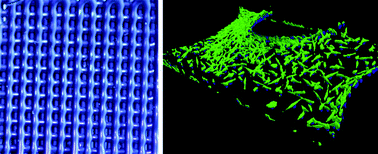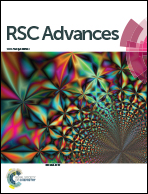A bio-friendly, green route to processable, biocompatible graphene/polymer composites†
Abstract
Graphene-based polymer composites are a very promising class of compounds for tissue engineering scaffolds. However, in general the methods of synthesis are environmentally hazardous and residual toxic materials can affect the biocompatibility significantly. In this paper a simple, scalable, environmentally-friendly, microwave-assisted synthesis is described that results in conducting graphene/polycaprolactone composites that retain the processability and biocompatibility of the pristine polymer without introducing possibly hazardous reducing agents. Composites of polycaprolactone and graphene oxide were synthesised in a single step by the ring-opening polymerisation of ε-caprolactone in the presence of dispersed graphene oxide nanosheets under microwave irradiation. The graphene oxide provides a nucleation centre for the crystallisation of the polymer resulting in polymer-functionalised nanosheets. During polymerisation, the graphene oxide was also reduced to conducting graphene. The resulting graphene/polymer composites were comparable to composites prepared by blending previously highly chemically reduced graphene into polycaprolactone, and they could be easily dispersed in a number of solvents or melt extruded for further processing. These three-dimensional melt extruded materials showed excellent biocompatibility and are promising substrates for tissue engineering scaffolds.


 Please wait while we load your content...
Please wait while we load your content...